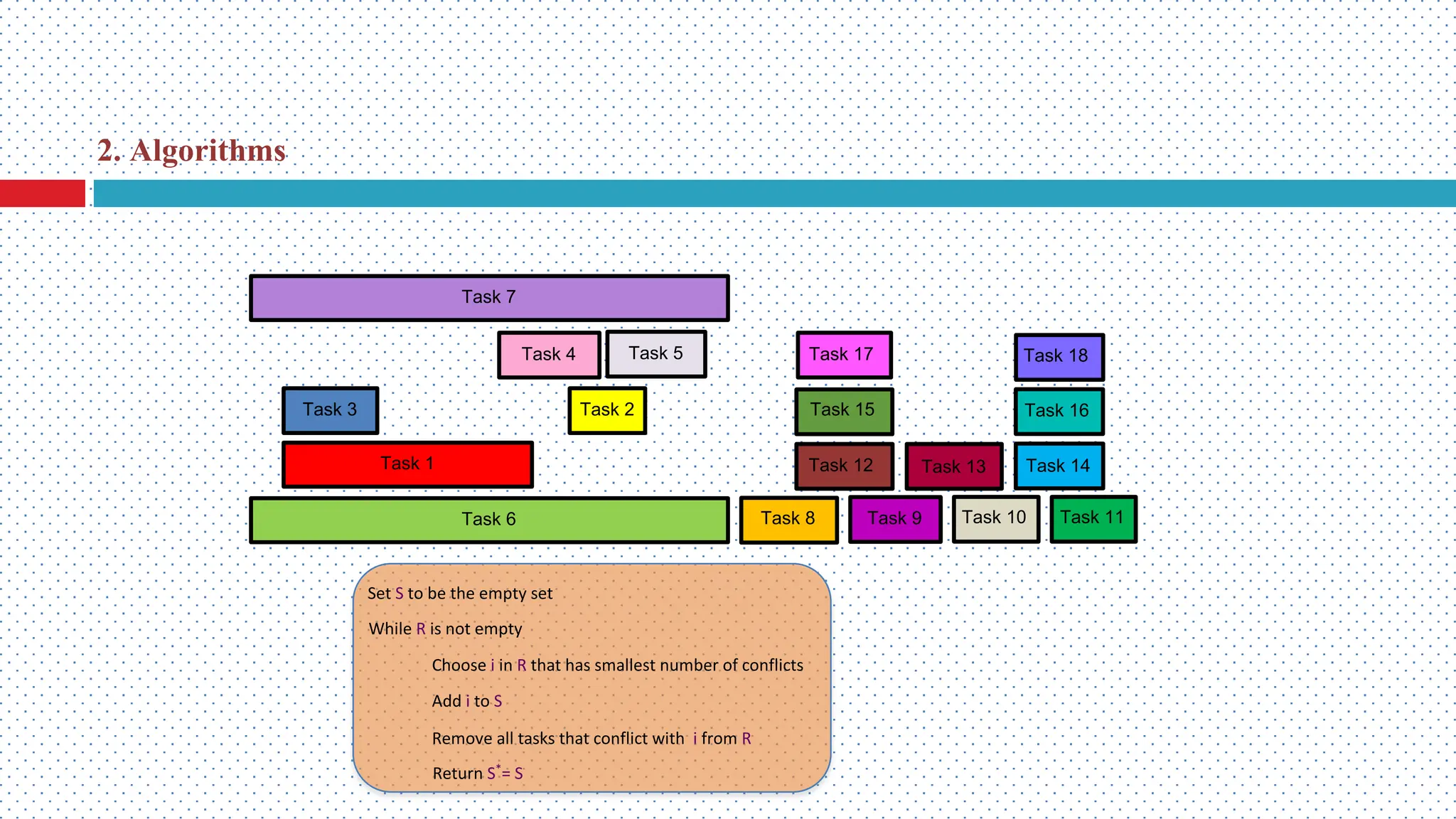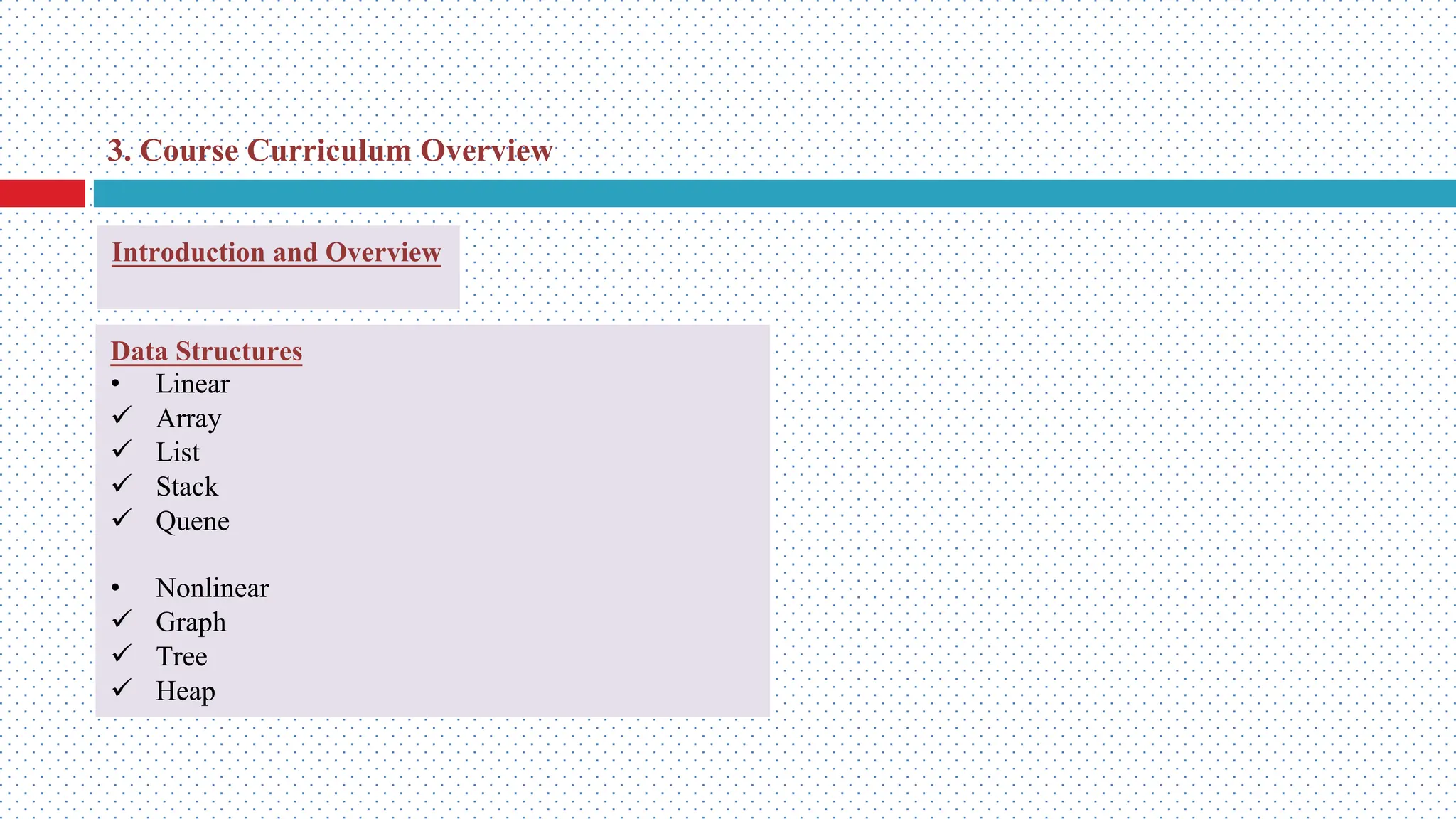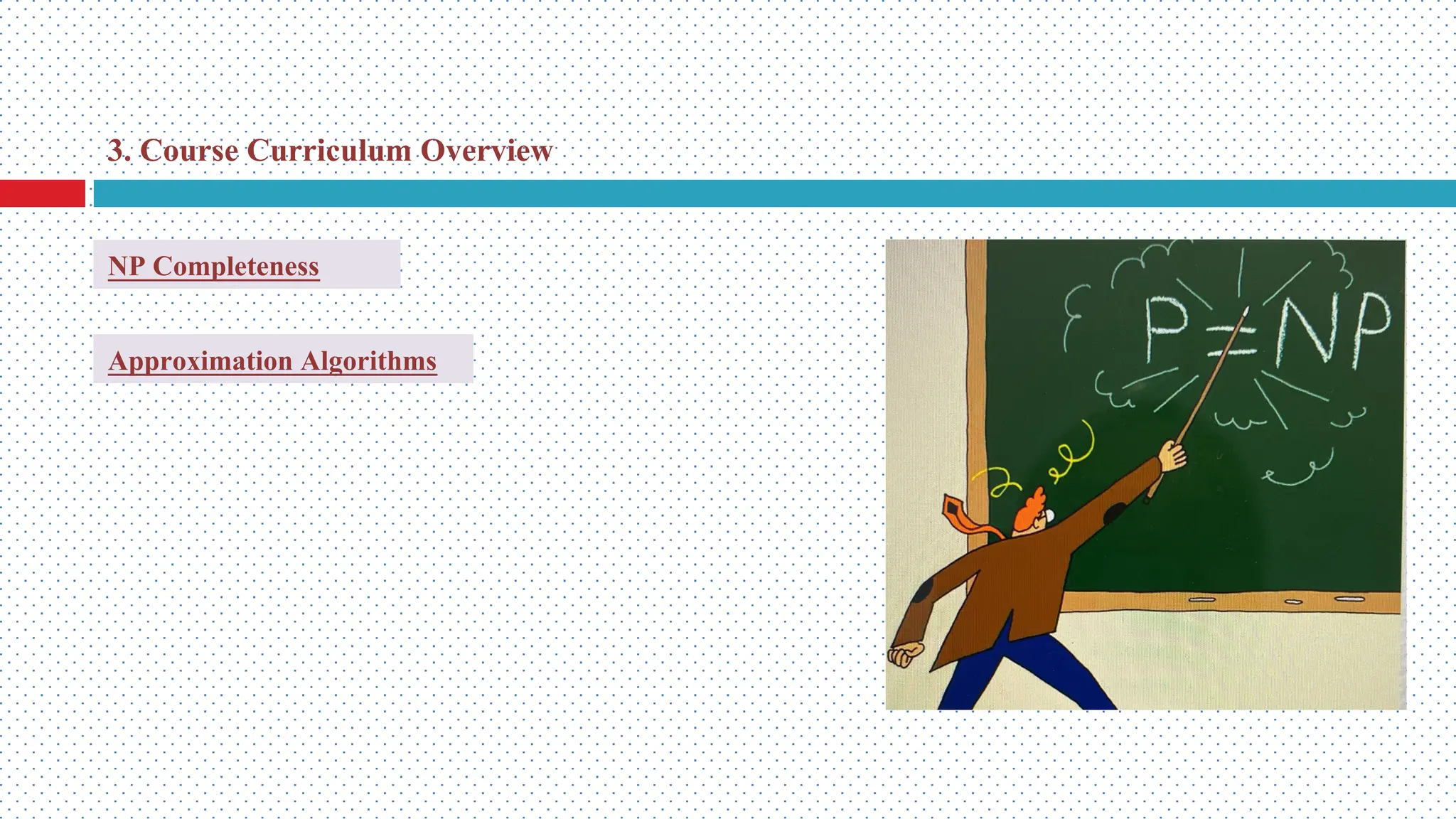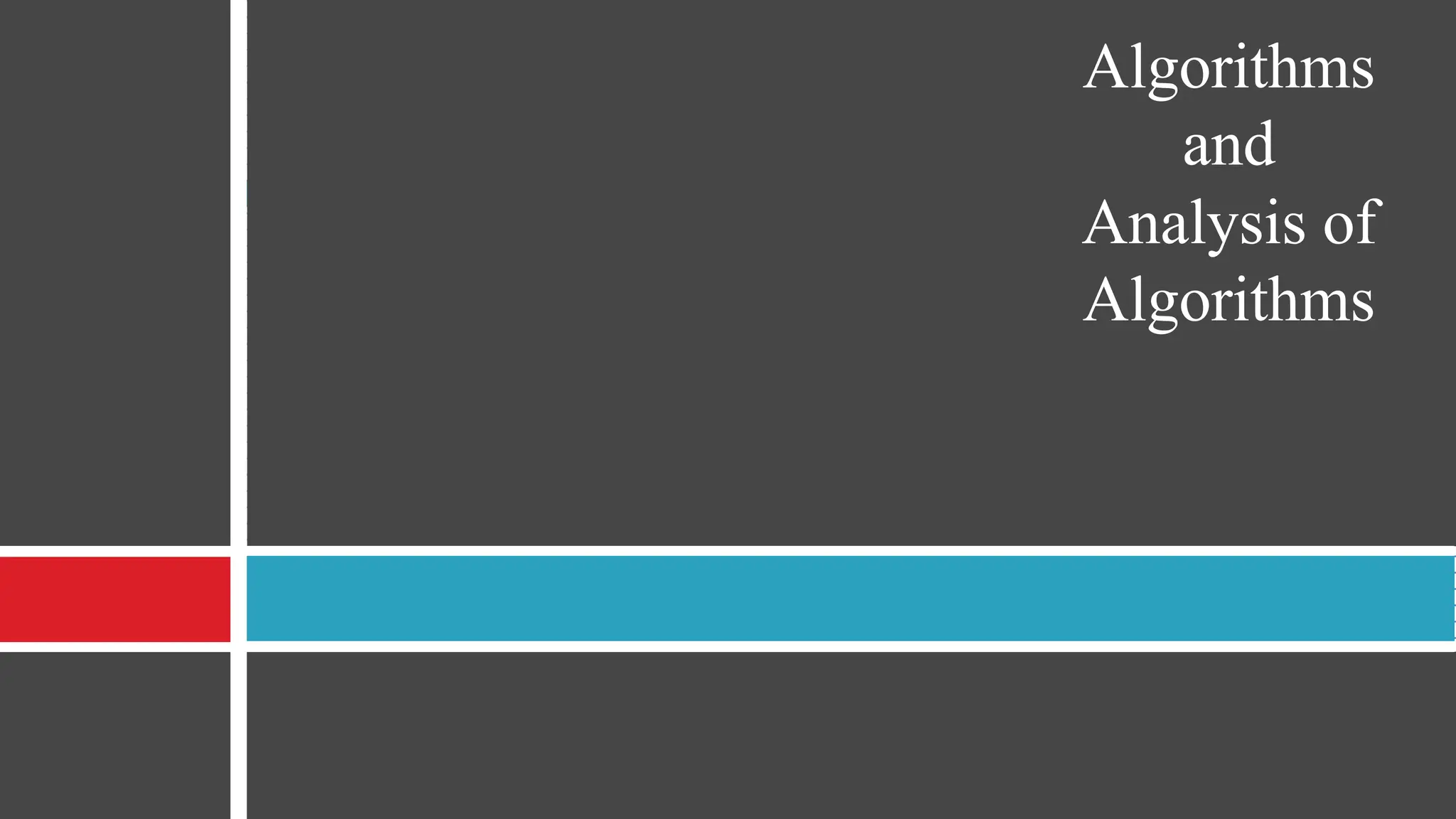This document provides an overview of an algorithms course curriculum. It covers topics like asymptotic analysis, recursion, sorting algorithms, graph algorithms, dynamic programming, greedy algorithms, and NP-completeness. The course aims to teach students how to design efficient algorithms, analyze their complexity, and solve problems algorithmically. Students will learn algorithm design techniques like divide-and-conquer, dynamic programming, greedy approaches, and more. The course also covers analysis of algorithm efficiency and complexity classes.










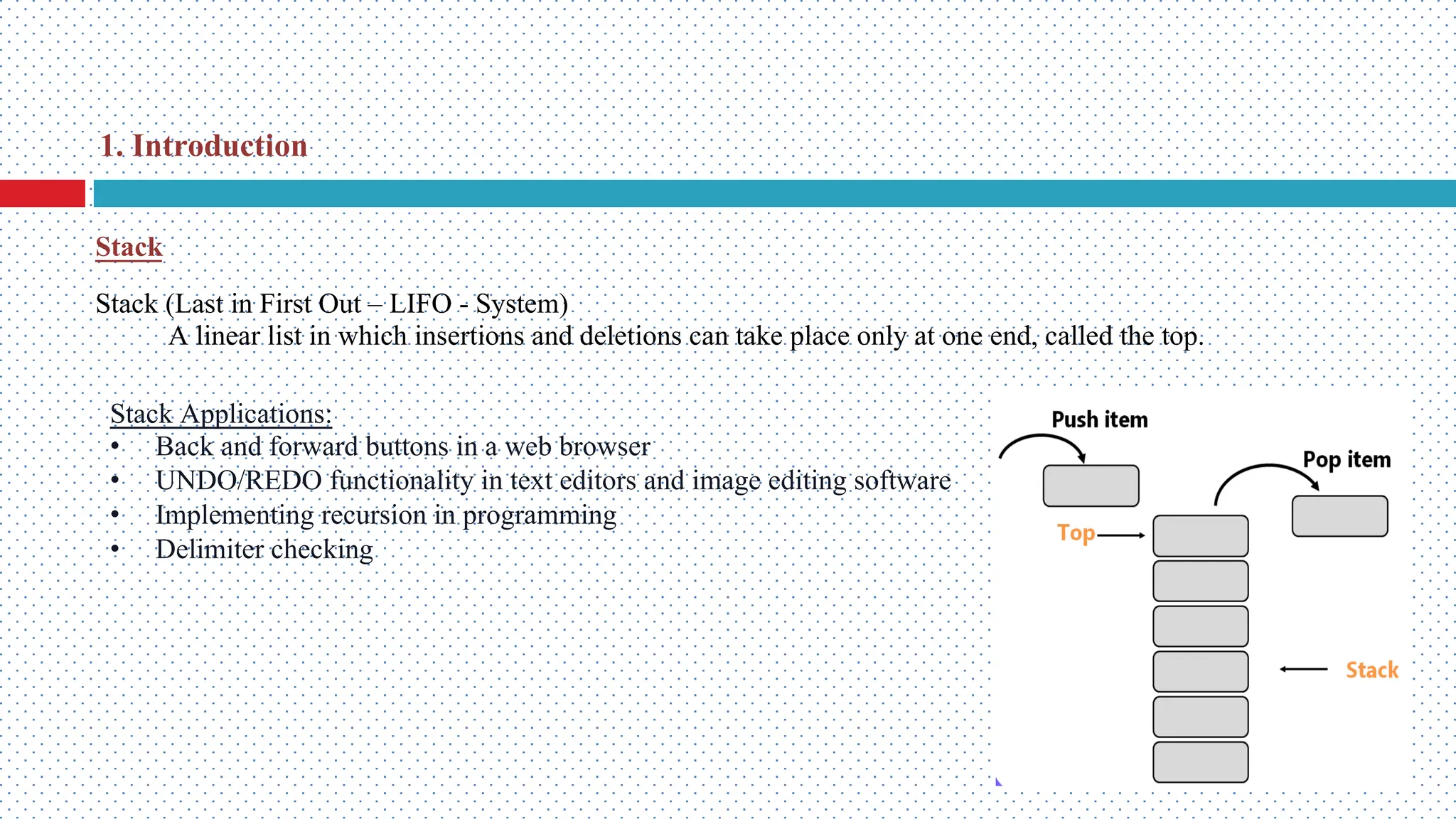













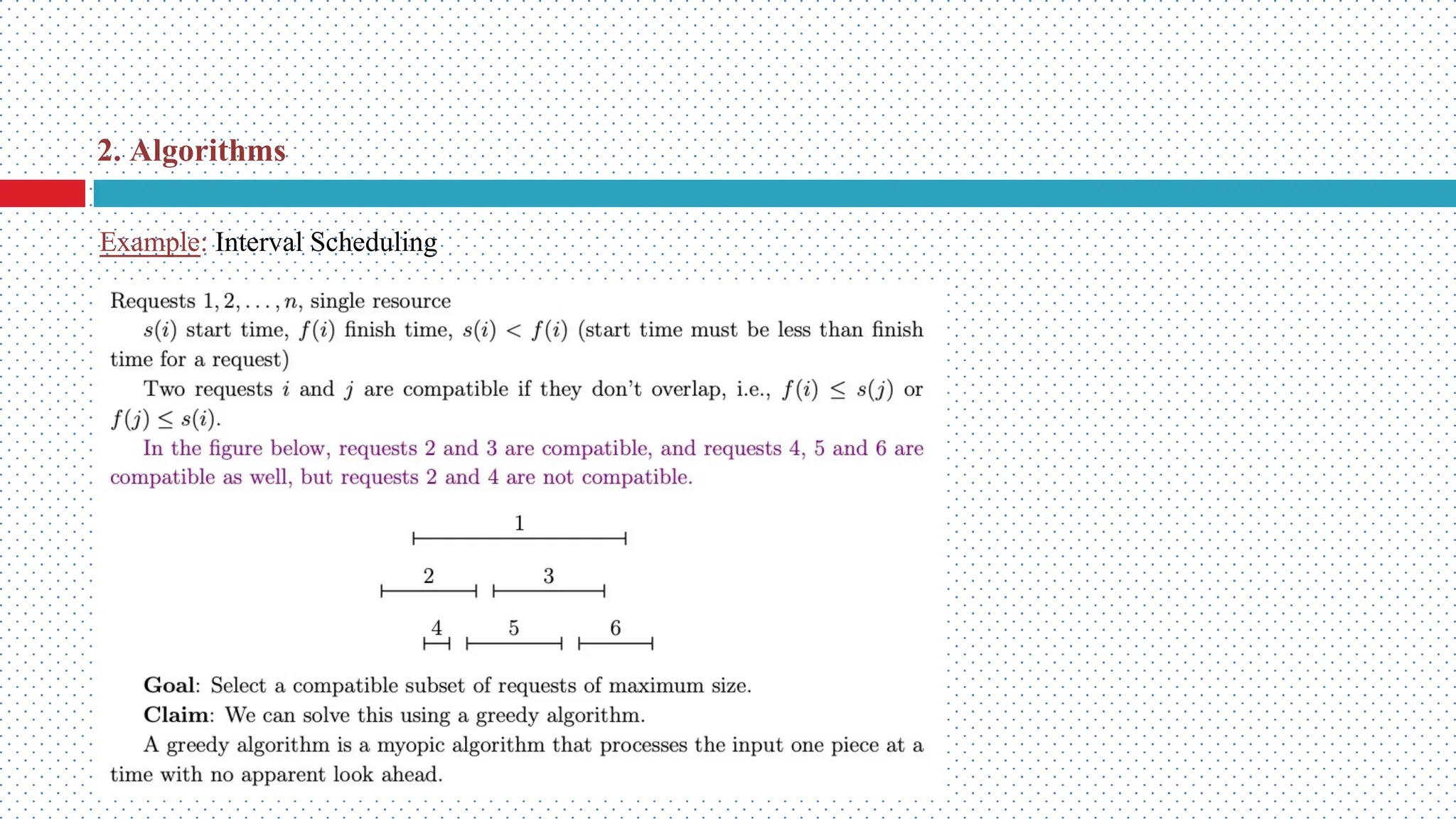

![Interval Scheduling Problem
Input: n intervals [s(i), f(i)) for 1≤ i ≤ n]
Output: A schedule S of the n intervals
No two intervals in S conflict
|S| is maximized
2. Algorithms
Input: n intervals; ith interval: [s(i), f(i)].
Output: A valid schedule with maximum number of
intervals in it (over all valid schedules).
Def: A schedule S ⊆[n] ([n]={1,2,…,n})
Def:AvalidscheduleShasnoconflicts.
Def:intervalsiandjconflictiftheyoverlap.
Greedy Interval Scheduling](https://image.slidesharecdn.com/lec01-introductionandoverview-240106130709-755b05ca/75/Lec01-Algorithems-Introduction-and-Overview-pdf-27-2048.jpg)
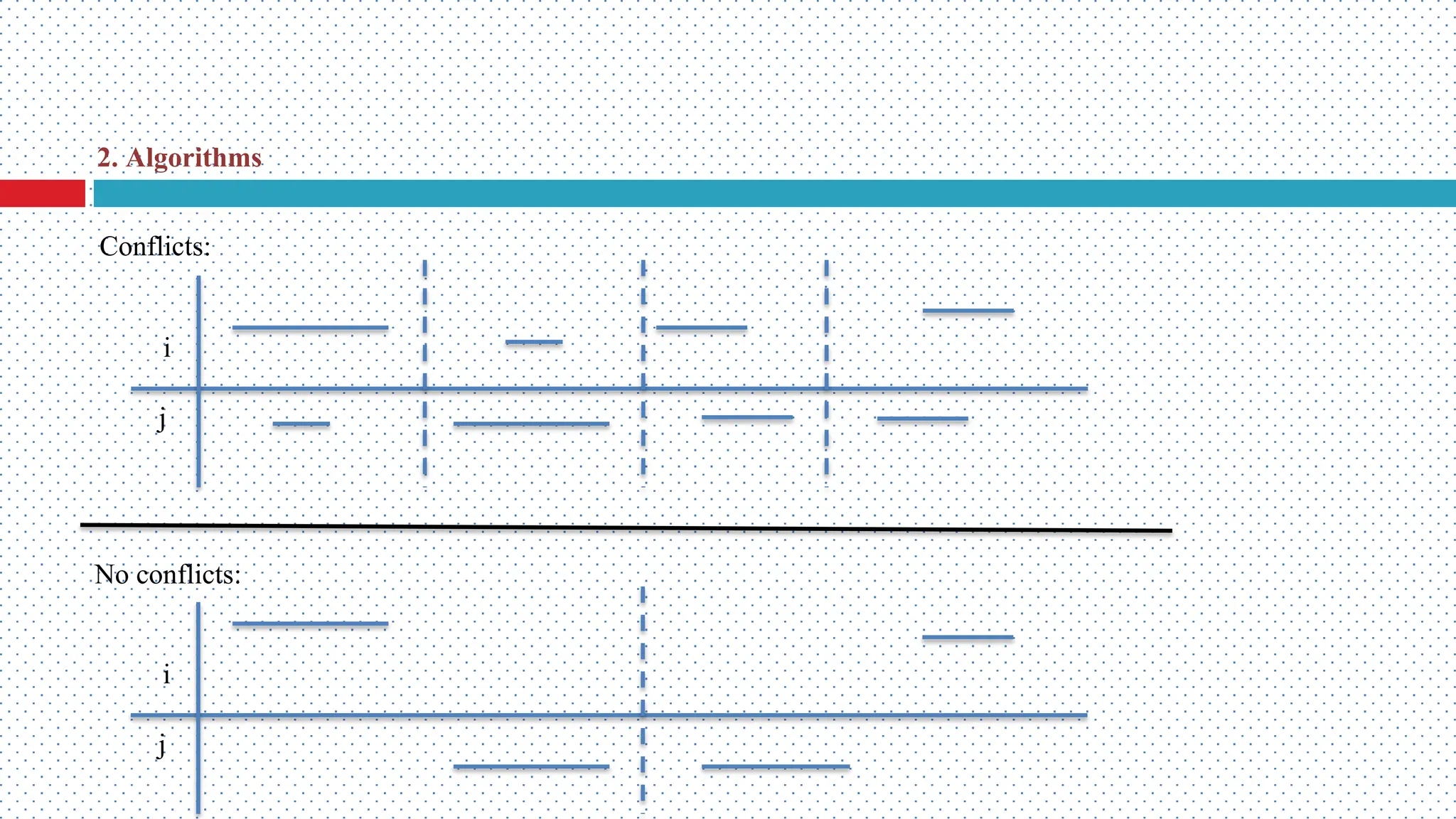
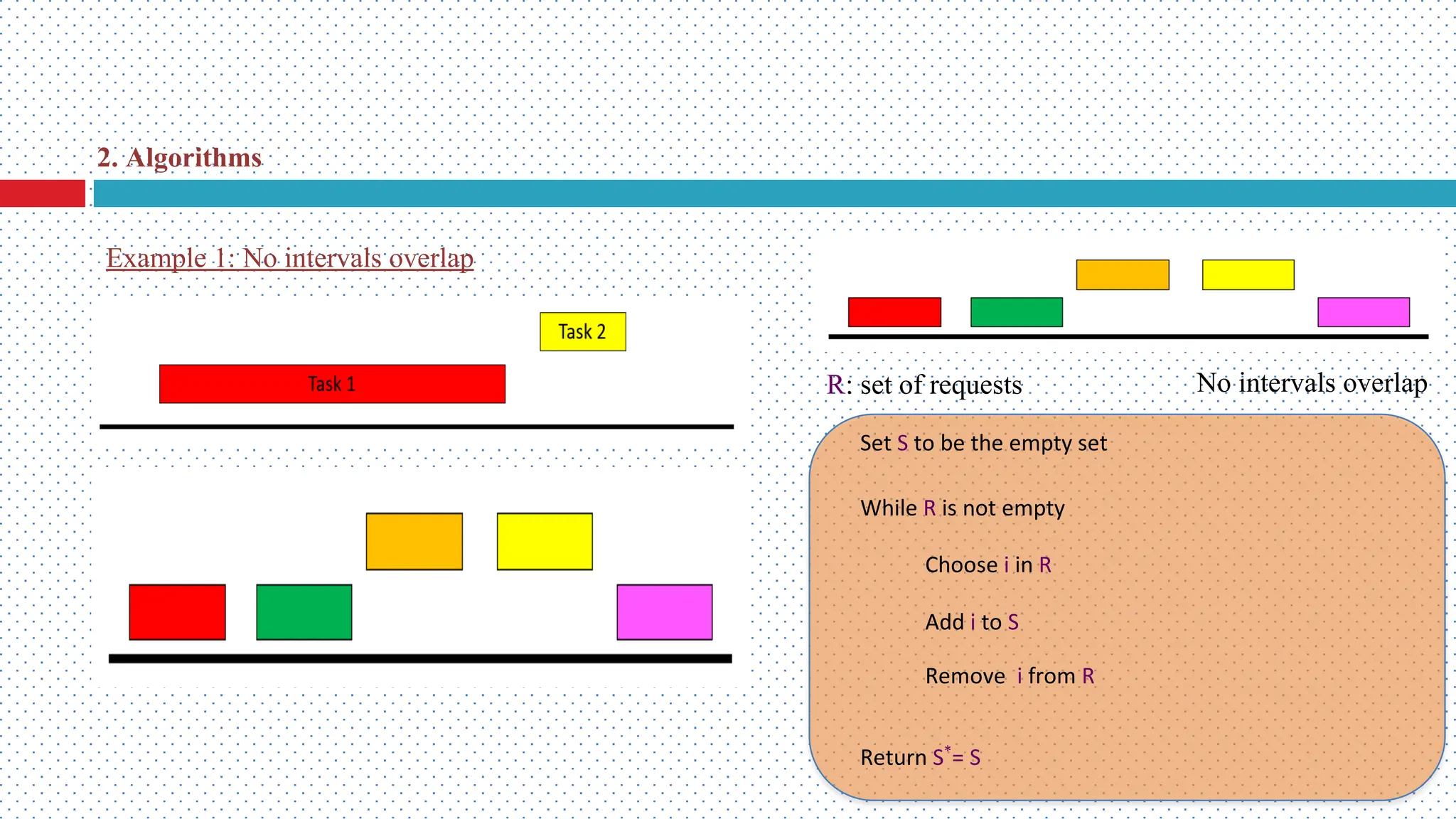
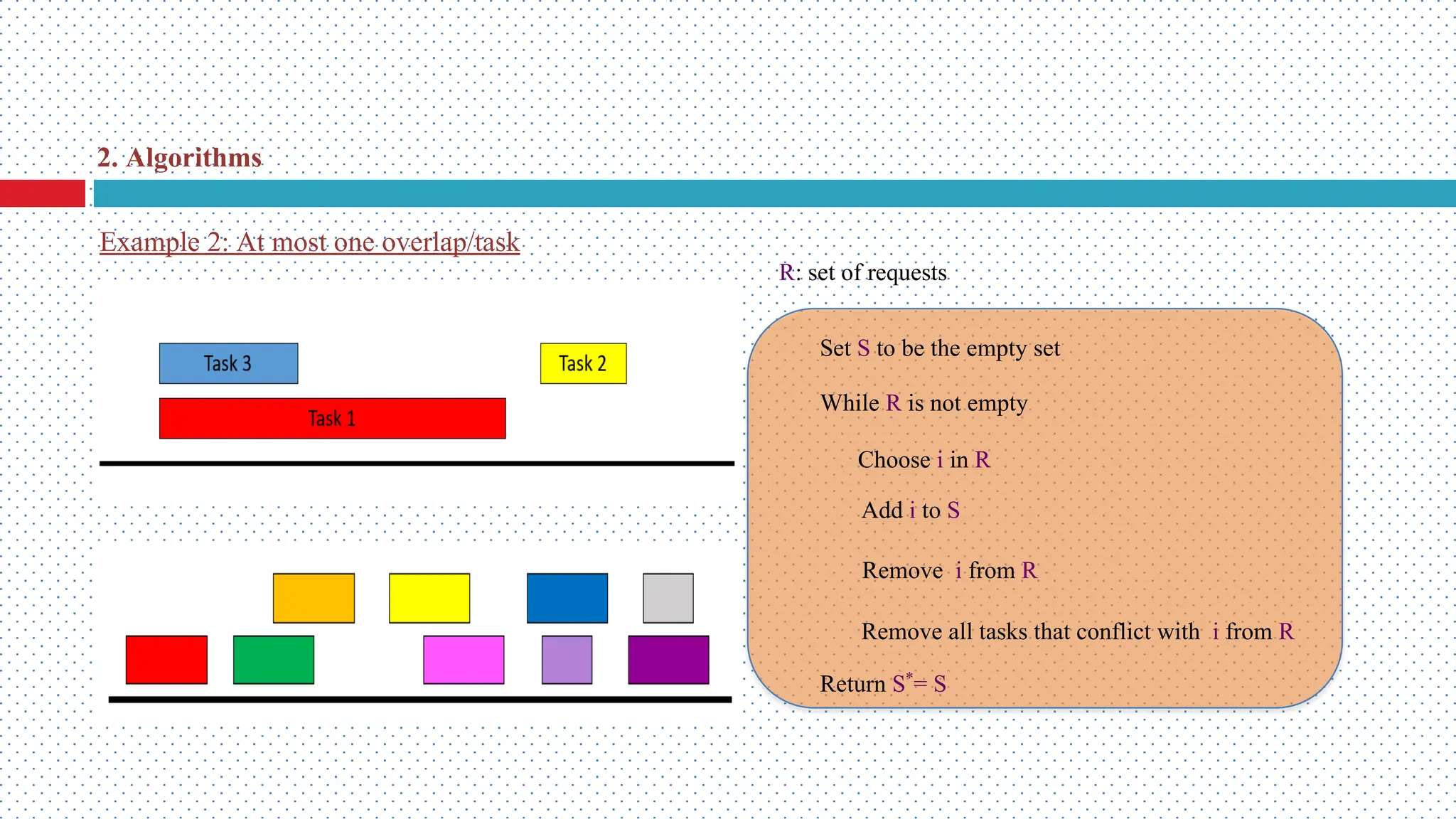


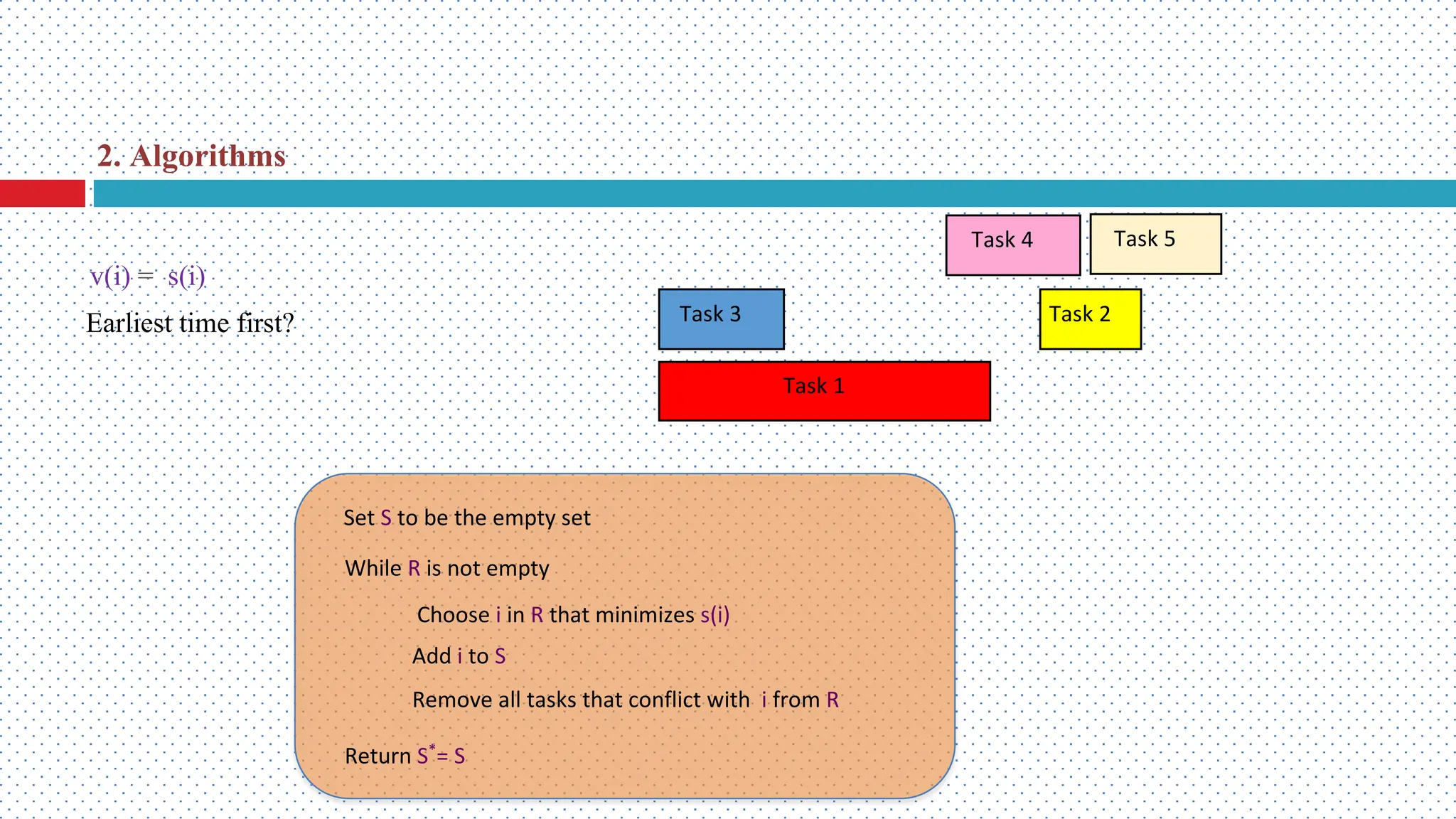
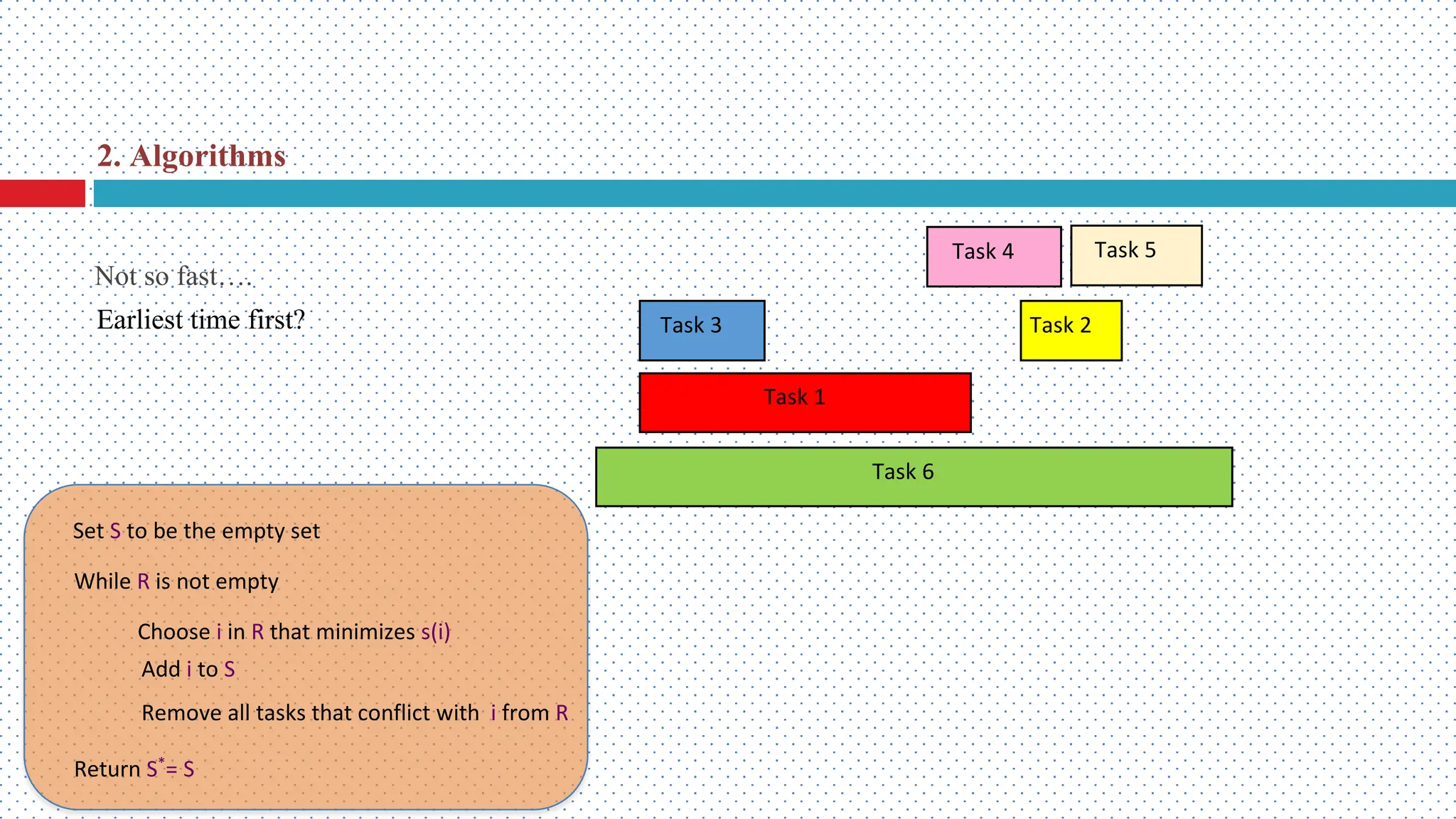
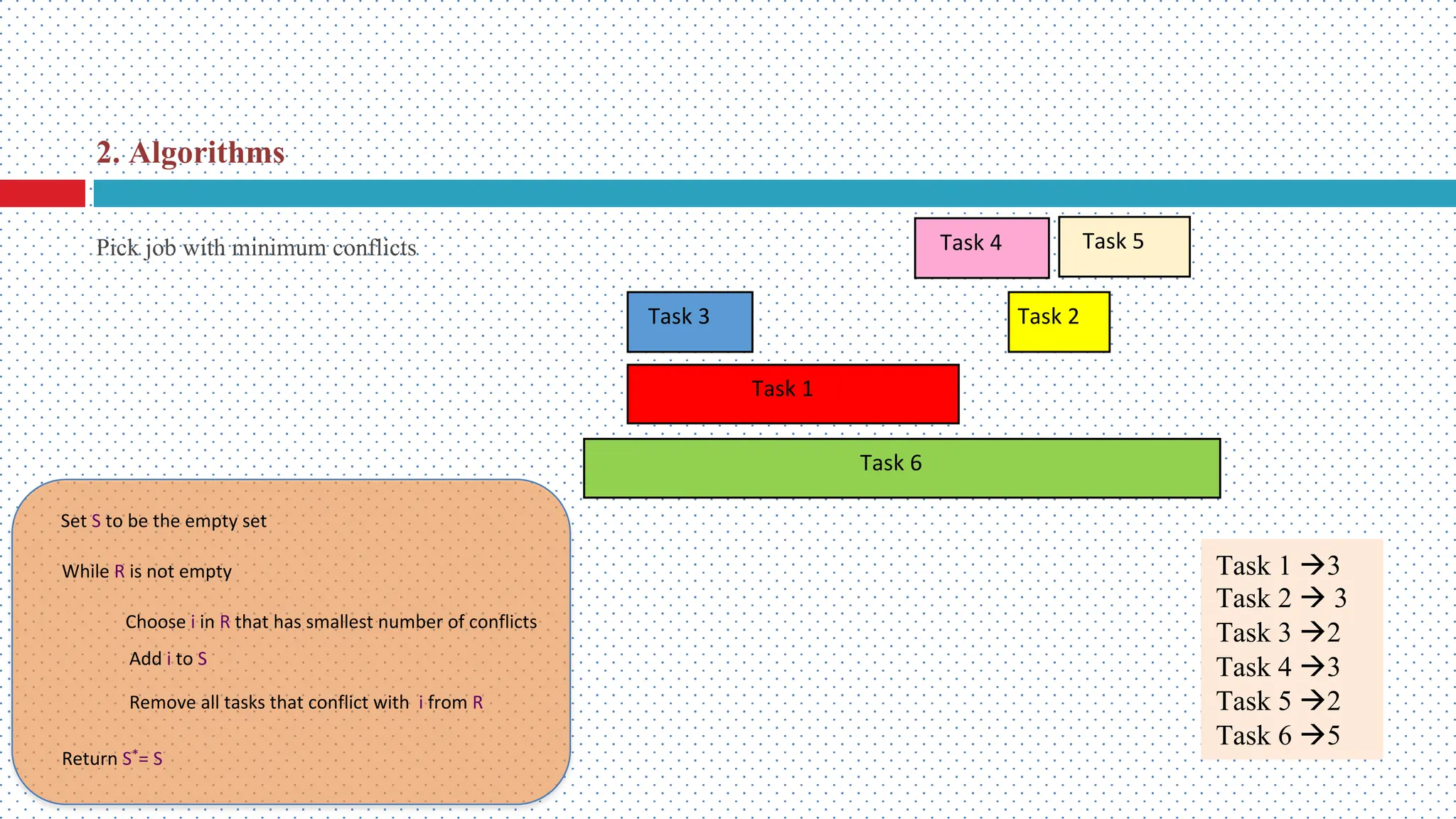
![Output: [Task 2, Task 3, Task 4] is an optimal solution because these
tasks have no conflicts with each other and any set with 4 tasks will
have at least two intervals in conflict.
2. Algorithms](https://image.slidesharecdn.com/lec01-introductionandoverview-240106130709-755b05ca/75/Lec01-Algorithems-Introduction-and-Overview-pdf-36-2048.jpg)
